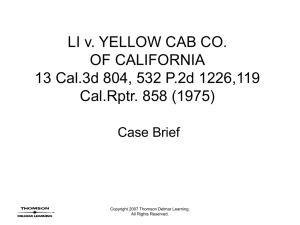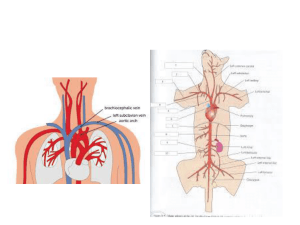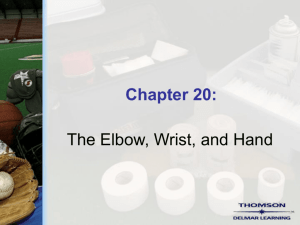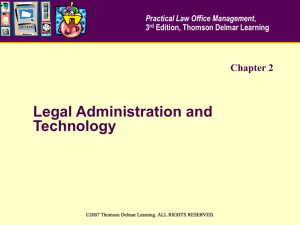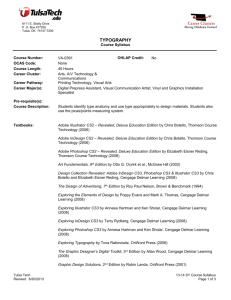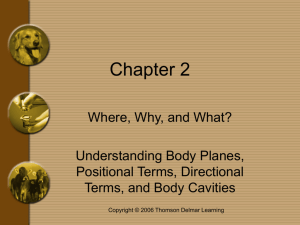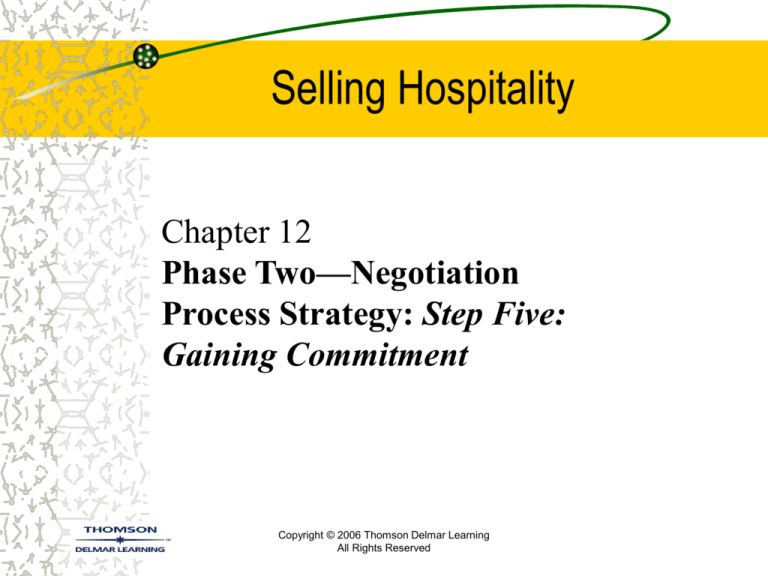
Selling Hospitality
Chapter 12
Phase Two—Negotiation
Process Strategy: Step Five:
Gaining Commitment
Copyright © 2006 Thomson Delmar Learning
All Rights Reserved
The Buying/Selling Process
The Pre-Negotiation Process
Phase 1—Pre-Negotiation Strategy
– Understanding Negotiations
– Prospecting
– Pre-call Preparation
Phase 2—Negotiation Process Strategy
–
–
–
–
–
Approaching the Buyer (Chapter 8)
Investigating Needs (Chapter 9)
Demonstrating Capability (Chapter 10)
Negotiating Concerns (Chapter 11)
Gaining Commitment (Chapter 12)
Copyright © 2006 Thomson Delmar Learning
All Rights Reserved
The Need for the Close
A sales manager is doomed to disappointment if
he or she depends on the customer to take the
initiative and sign the order.
Copyright © 2006 Thomson Delmar Learning
All Rights Reserved
Why Gaining Commitment
Can Be Difficult
Buyer
– fear of failure
– busy or preoccupied
Salesperson
– fear of rejection
Copyright © 2006 Thomson Delmar Learning
All Rights Reserved
Increasing Chances of
Gaining Commitment
Focus on the prospect’s dominant buying motive—prospect’s hot
button.
Negotiate the toughest points—if your product/service has a weak point,
make sure that it surfaces BEFORE attempting to gain commitment.
Avoid surprises at the gaining commitment step—salespeople should
ensure that potentially surprising information is not revealed to the prospect at the
last step.
Display self-confidence at the gaining commitment step.
Ask the prospect to purchase more than once—statistics have shown
(a) 50% of all salespeople asked for the purchase once, (b) 20% asked twice, and (c)
the most productive salespeople asked three times or more.
Recognize clues that invite moving to gaining commitment—these
clues are often referred to as buying signals.
Copyright © 2006 Thomson Delmar Learning
All Rights Reserved
Copyright © 2006 Thomson Delmar Learning
All Rights Reserved
Getting Past No
Does a salesperson obnoxiously ask a prospect five
times in a row to purchase? No.
After a first no, the salesperson questions further and
engages the prospect in more discussion and asks for
the purchase at an appropriate moment. In many cases,
the salesperson finds a reason to break off the
negotiation session and return at a later time when the
situation has cooled and/or the salesperson has more
information.
So, do not give up after one No!
Copyright © 2006 Thomson Delmar Learning
All Rights Reserved
Buying Signals
These clues are of two types:
Verbal clues come in several forms:
– “How soon can we get delivery?”
– “I have always wanted to hold a meeting in a Five-Star
property like this.”
– “We will need to have all our audiovisual equipment shipped
in two weeks before our meeting dates. Is that a problem?”
Nonverbal clues
Copyright © 2006 Thomson Delmar Learning
All Rights Reserved
Nonverbal Clues
Re-examining the product or banquet event order
(BEO)
Picking up a pencil and starting to figure
Leaving the room to talk to someone else about the
presentation
Subtle indications of interest, such as nodding one’s
head up and down, rubbing and holding one’s chin,
leaning forward in one’s chair with a friendly facial
expression
Copyright © 2006 Thomson Delmar Learning
All Rights Reserved
When to Close?
Prospect: Your costs are $1,000 greater than the
competition.
Seller: Yes, but when you consider that our unit
lasts 50 percent longer, our higher costs works
out to your advantage
Prospect: Yeah, I guess you are right.
Copyright © 2006 Thomson Delmar Learning
All Rights Reserved
Closing Methods
Trial (or minor) close
– Summary-of-the-Benefits Close
– Assumption Close
• “Shall I indicate master billing on the letter of agreement?”
• “Should we deliver Monday or Tuesday of next week?”
– Special-Concession Close
• Offer the buyer something extra for acting immediately.
• “As an added bonus, we can host (provide as complimentary—comp)
your group’s reception party on the night of arrival.”
– Single-Problem Close
• “Mr. Prospect, it seems that you like all the benefits that we have
discussed except this one. Is that right? If I could take care of this,
would you sign the letter of agreement?”
Copyright © 2006 Thomson Delmar Learning
All Rights Reserved
Direct Appeal Close
“Can I send you a letter of agreement?”
“Would you prefer that I send you a letter of
agreement by email or by overnight mail?”
Copyright © 2006 Thomson Delmar Learning
All Rights Reserved
Letter of Agreement
Names of both contracting organizations
Official dates
Meeting attendee arrival and departure patterns
Warranty of authority
Number and kinds of sleeping rooms
Room rates
What is complimentary
Meeting/exhibit/banquet rooms
– Setup styles
Meeting/exhibit/banquet room rates; audiovisual equipment
Union regulations
Food and beverage functions
Copyright © 2006 Thomson Delmar Learning
All Rights Reserved
Financial Items in
Letter of Agreement
Master and individual accounts (folios) and
credit procedures
Method of payment
miscellaneous charges
Copyright © 2006 Thomson Delmar Learning
All Rights Reserved
Legal Items in
Letter of Agreement
Nonperformance clauses
– termination/cancellation
– penalty clauses
– insurance and indemnification
Legal jurisdiction and/or arbitration clauses
Copyright © 2006 Thomson Delmar Learning
All Rights Reserved



